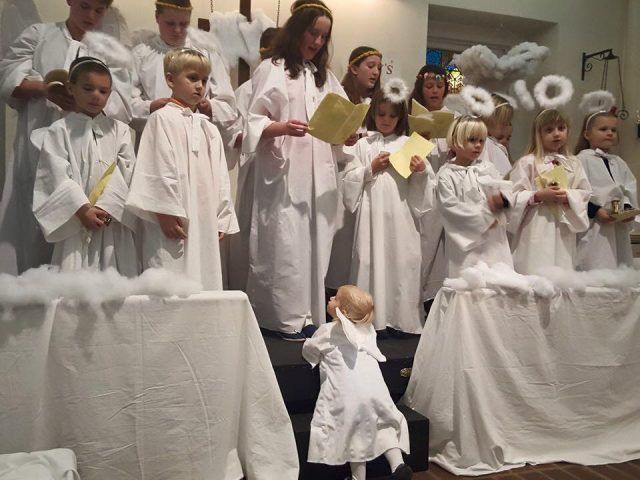-
Button
Valley Lee, central on the map, is on the west side of the St. Mary’s River and east side of the Potomac River
-
Button
St. George’s Church, from the north
-
Button
St. George’s with steeple, date unknown
-
Button
Interior of St. George’s Church before 1958 renovation
-
Button
St. George’s Chancel, interior, after the 1958 renovation
-
Button
St. George’s kids, with Fr. Greg, at summer camp
-
Button
St. George’s youth group, helping with Mobile Food Drive in Lexington Park
-
Button
Christmas Pageant at St. George’s
-
Button
St. George’s families helping at Thanksgiving Food Drive in Lexington Park
-
Button
Ascension & St. George’s neighborhood Christmas caroling
St. Georges Episcopal Church History
It’s hard enough to write the definitive history of any church; harder when it’s as old as St. George’s in Valley Lee. It’s made more interesting, however, when the story itself is one in which what is new is old … and what is old is new.
Here’s what we know: Leonard Calvert and his party of settlers established the Colony of Maryland, landing from the Ark and the Dove at St. Mary’s City, Maryland in 1634. More, we know that settlement in the Colony spread quickly and spread westward — that is, up the Potomac River. We know that a new political subdivision, named St. George’s Hundred, was established in 1638 just west of the St. Mary’s River, putting it near what is today Valley Lee.
Obviously, those early pioneers in that newly expanded subdivision built a church. It’s believed the first church at what’s called “Poplar Hill” was erected sometime between 1638 and 1642. More than likely it stood 50 feet north of the present structure. Its position was, in all probability, determined by the location of two great oak trees which stood on either side of its entrance. Those oaks are gone today, but there are plenty of folks who still remember them — and the church gatherings and autumn homecomings which took place under their welcome shade.
And that is part of the difficulty — and thrill — of writing St. George’s history, that is, writing what appears to be a seamless history. It’s more a place than a building; more a gathering center than an established institution. The history of this church has as much to do with those oak trees, now gone, as the rectors, or deeds, or buildings, or people. It’s also not inconsequential that the church sits pretty much halfway between two significant manor homes — in their time, tobacco plantations — one on the Potomac River, the other on the St. Mary’s River.
But that’s getting ahead of the story. In its earliest days, St. George’s was a simple chapel, planted on a hill dotted with poplar trees. It was served by lay readers and, from time to time, clergy from neighboring Virginia. A second church was built on the site in 1692, and a third in 1760. We know that the present church was completed in 1799, and there is sufficient masonry evidence to suggest that the walls predate the roof line, suggesting perhaps a fire, or some other destruction, sometime between 1760 and 1799.
In 1692, the Colony of Maryland was divided into thirty geographic Church of England parishes — a consequence of England’s Glorious Revolution of 1688, which saw the Protestant monarchs William III and Mary II replace the Catholic King James II. What it meant in Maryland was that the Church of England became the established church. St. Mary’s County was divided into two Parishes: William & Mary Parish to the south; King & Queen Parish to the north. St. George’s was designated as the parish church of William & Mary Parish; Christ Church in Chaptico became the parish church of King & Queen Parish.
But that’s, perhaps, a good place to pause. We could write about the many rectors who’ve served here — the current rector, the Rev’d Gregory C. Syler, being by one count number 59. We could write about the extensive interior alterations to the church building in 1884: removal of the slave gallery and pulpit; bricking up the side doors; installation of stained glass windows (probably obtained from a Baptist church in Philadelphia); removal of doors from pews; and installation of iron supporting rods in the walls. We could mention that they tried to put a steeple on the church — twice, in fact — and that they removed it both times, most likely because the weight of the bell made the roof unsafe.
But for most of the life of this church, St. George’s was a simple, unassuming, occasional gathering space for God’s People. The vast majority of clergy were shared with Trinity Church, St. Mary’s City, to our south; and we shared several rectors in the 19th century with St. Andrew’s Parish in Leonardtown, to the north. St. Mary’s County, itself, was fairly quiet, too … until the 1940s when the Navy needed to substantially increase the capacity of Naval aviation, a pressing need given the time’s geopolitical climate. There was plenty of land south of Washington, DC in St. Mary’s County, and the Navy grabbed it — commissioning the Patuxent River Naval Air Station, or “Pax River” in 1943.
That’s when the modern St. Mary’s County and, in time, St. George’s Church came to be. In 1930, St. Mary’s County’s total population was 15,189; ten years later, it went down to 14,626. When “Pax River” moved in, so did the people. 1950’s census showed a population surge to 29,111. It jumped to 38,915 in 1960. The upward trend hasn’t ceased. In 2019, 112,667 people called St. Mary’s home — more than a 600% increase in 80 years!
St. George’s responded to its new situation. The physical campus in Valley Lee, like its surrounding community, was dramatically expanded. In the 1940s, a sturdy belltower — with a new bell — was constructed next to the church. In 1958, a sacristy addition was constructed and the church’s crumbling infrastructure was restored. A brick floor was laid in the church, now containing four ancient burial stones, and new walls covered the necessary structural reinforcements to the 17th century brick frame. In 1960, a parish hall went up adjacent to the church and, in 1965, a rectory was added. For the first time, St. George’s called its own rector. Meanwhile, the community — both inside the church and surrounding it — was booming!
St. George’s, at least its contemporary version, has been as much a product of the mid-20th century Baby Boom and the arrival to St. Mary’s County of the Patuxent Naval Air Station as it is a congregation only a few decades shy of 400. For well over 300 years, St. George’s was a lovely and simple rural church building — more a chapel than a dominant edifice. It’s parochial life was not at all self-contained: it had no rectory on the campus; no rector solely dedicated to its internal life; no parish hall, administrative offices, or much of an institutional overhead. It was a gathering place with a missionary spirit, pulling in God’s people for worship and fellowship. Planted near those large “treaty oaks,” St. George’s stood proudly as witness to the God who made himself known in Jesus Christ, the embodied, incarnate Word.
On the basis of that, therefore, St. George’s has turned to its history as part of its strength, turning in many ways ‘back to the future’ in order to chart a more vibrant missionary future. We all know the stories of diminishing religious participation and church attendance. In fact, we know those stories so well that many people, including church people, suspect that’s the end of the story. But our God, made known to us in Christ, is in the business of making all things news — so preached Isaiah (43:19); so wrote John the Divine (Rev. 21:5). That’s what The Episcopal Church prays every Good Friday — which seems on its face like a day of death, but is, in fact, the declaration of God’s ultimate victory (see Collect, below).
Starting in 2009, St. George’s, together with its rector, the Rev’d Greg Syler, set out to explore and discern what The Episcopal Church in St. Mary’s County and Southern Maryland would look like down the road. Thinking that ten years would be far-enough away, they asked: “What will the Episcopal Church in St. Mary’s County look like ten years out?” In 2010, the Episcopal Diocese of Washington appointed an exploratory group to consider these questions region-wide. In 2012, the three lower St. Mary’s County congregations of Ascension, Lexington Park; Trinity, St. Mary’s City and St. George’s, Valley Lee, began to discern a potentially collaborative future. In 2015, Ascension and St. George’s moved into a more formal ministry-sharing partnership and, in 2016, the Rev’d Greg Syler was called as Ascension’s fourth rector — while remaining rector of St. George’s. In 2019, both congregations voted to merge their separate parishes and become one parish with two churches: Ascension and St. George’s.
Today, St. George’s is once again a church with a mission, literally a church on a mission — God’s mission to restore all persons to unity in Christ. Partnership with Ascension, our ‘downtown’ church, means St. George’s, itself, is in a more robust position to meet the hurts of God’s people with the power of Christ’s Good News. Surrounded by growing neighborhoods near Valley Lee, St. George’s is teeming with young families and children and youth, many of whom are taking active leadership roles in helping give shape to a thriving, mission-forward future for the church. Under the inspirational leadership of Eliza Garth, St. George’s music director since 2014, music and St. George’s worship life has profoundly deepened, and musical gifts come from all around the congregation — including the wider community. St. George’s Church, today, is a thriving, mission-minded gathering of God’s People, eagerly leading with ministries that seek to touch lives, transform communities, and show Jesus, our Risen Lord. St. George’s, together with our partners at Church of the Ascension in Lexington Park, are a resurrection people — indeed, Resurrection Parish!
St. George’s, today, is putting into action the words of prayer — specifically, as noted, what The Episcopal Church prays every Good Friday:
O God of unchangeable power and eternal light: Look favorably on your whole Church, that wonderful and sacred mystery; by the effectual working of your providence, carry out in tranquility the plan of salvation; let the whole world see and know that things which were cast down are being raised up, and things which had grown old are being made new, and that all things are being brought to their perfection by him through whom all things were made, your Son Jesus Christ our Lord; who lives and reigns with you, in the unity of the Holy Spirit, one God, for ever and ever. Amen.
Contact Info
19167 Poplar Hill Road
PO Box 30
Valley Lee, MD 20692
301-994-0585










